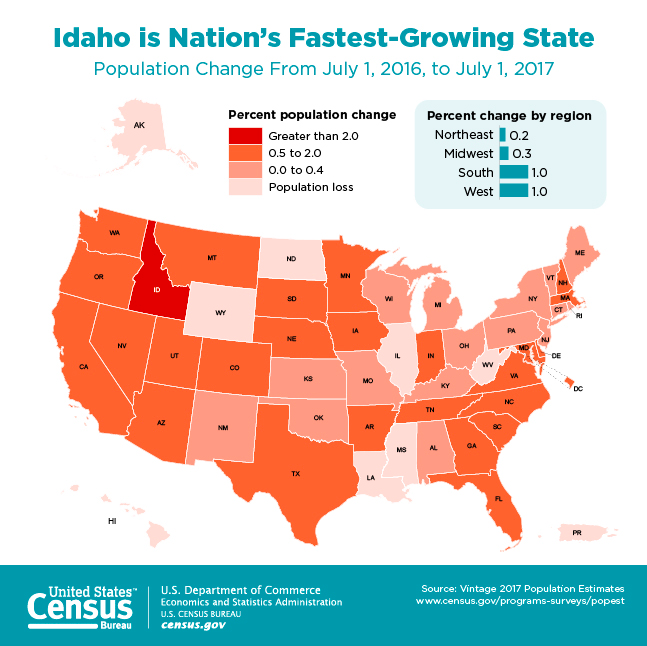Though the 2020 Census is still a few years away, most experts predict Kansas will retain all four of its Congressional seats after redistricting.
Kansas’ waning population compared to other states was one reason Gov. Sam Brownback hoped to spark economic gains through the 2012 tax reform. In an interview last August, Gov. Sam Brownback recalled that former U.S. Sen. Bob Dole was first elected to Congress as the representative from Kansas 6th Congressional District. Now Kansas only has four seats in the U.S. House of Representatives.
“We’re down to four, maybe headed to three,” the Governor said in an interview last August. “…I kept looking at the migration data, and it was just exactly what you thought it would be for Kansas. We were getting people from higher tax states to Kansas and we were losing them to lower tax states.”
The Census released updated population data before Christmas, and most experts agree Kansas is likely to retain all four of its current Congressional seats. A number of states are on the bubble of adding or losing seats, however.

If reapportionment were to occur now, Illinois (18), Michigan (14), Minnesota (8), and Pennsylvania (18) would likely lose one seat a piece, according to Real Clear Politics. Florida (27), North Carolina (13), Oregon (5), and Texas (36) would gain one each. Reapportionment won’t occur for another two years, but RCP projects population changes between now and then would result in the loss of one seat from Alabama (7), Illinois (18), Michigan (14), Minnesota (8), New York (27), Ohio (16), Pennsylvania (18), Rhode Island (2), and West Virginia (3). Texas (36) would gain three seats; Florida (27) would gain two seats, and Arizona (9), Colorado (7), North Carolina (13), and Oregon (5) would each gain one. (Numbers in parenthesis reflect current number of Congressional seats.)
Election Data Services, a political consulting firm, released similar projections, using three different methodology scenarios. All three scenarios projected that Arizona would add a seat and Texas and Florida would add at least two. In one of EDS analysis, Montana doubles its representation in the House from one seat to two. In the other projections, Texas adds a total of three seats.
The Census formula for calculating redistricting automatically gives each state one House seat. Seats after that are determined by state population relative to other states. For example, seat 51 is given to the state with the highest priority value and becomes one state’s second seat. The formula is run for seats 51-435.
EDS’ projections suggest that California is very close to losing a Congressional seat for the first time in 160 years. In all three of its scenarios, California’s 53rd seat in the House of Representatives is seat number 434 or 435.
EDS’ number crunching projects that 15 to 16 states could gain or lose between 8 and 10 Congressional seats in 2020, but Kansas isn’t one of them.
Kimball Brace, president of Election Data Services, said it’s important to note that the Census data released Dec. 20 is preliminary and much can change between now and 2020.
“Having worked with Census data and estimates since the 1970s, it is important to remember that major events like Katrina and the 2008 recession each changed population growth patterns and that impacted and changed the next apportionment,” he said.
California, for instance, is battling intense wildfires. The Thomas fire, northwest of Los Angeles, destroyed 1,063 structures and 281,000 acres and caused the evacuation of 50,000 people. Hurricanes in Texas and Florida could erase some of their gains. The data released in December was collected prior to the California wildfires and hurricanes Harvey and Irma.
Idaho (2) is the fastest growing state in the nation, but its rapid population growth likely won’t be enough to secure an additional Congressional seat come 2020.



